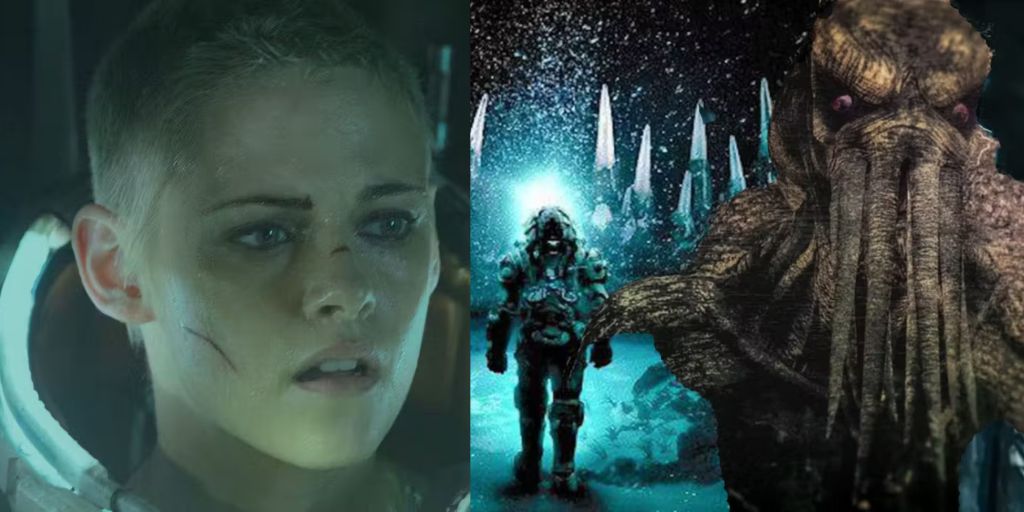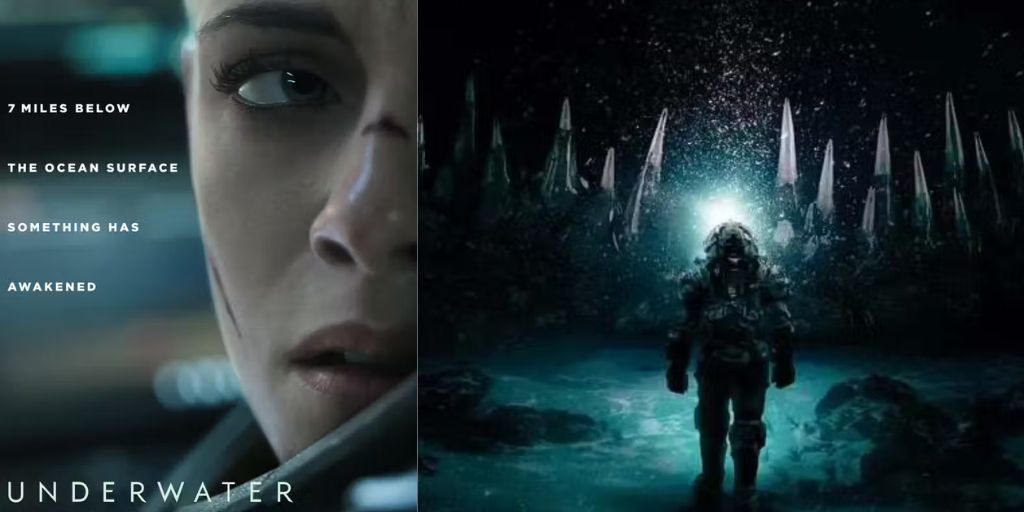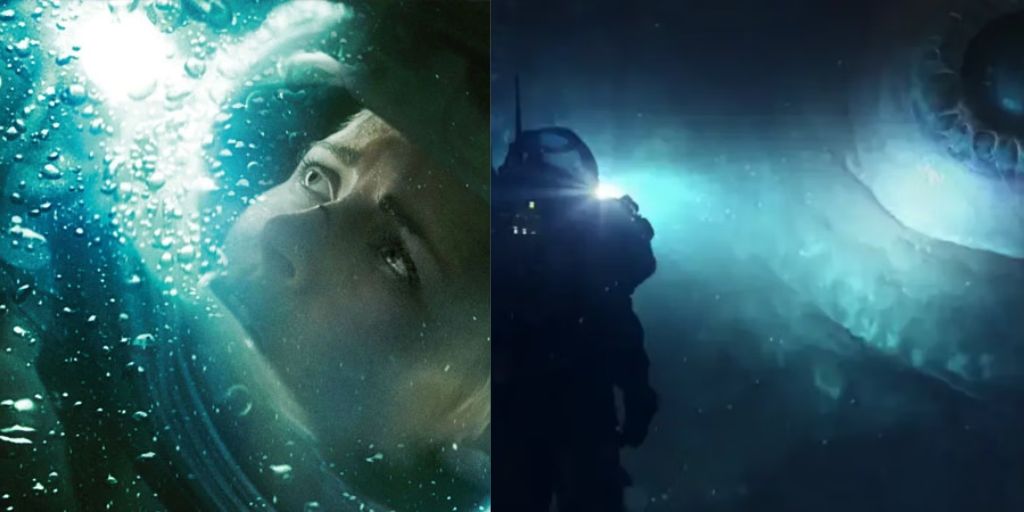Many modern Lovecraftian movies reveal their cosmic horror slowly. The 2020 film Underwater, directed by William Eubank, takes this idea to a new level. It starts as a thriller, but Underwater ultimately turns into a classic nightmare. The feeling of being trapped adds to the fear, and Cthulhu himself makes an appearance.
Kristen Stewart stars as Norah Price, who is an underwater engineer. She works at a secret drilling compound deep underwater. When the compound faces a terrible disaster caused by an unseen force, Norah gathers the survivors.
They must find escape pods to survive. Although Underwater did not get a lot of attention, it deserves more praise for its innovative take on classic Lovecraftian themes.
Cosmic horror usually focuses on fear from the vast and unknown ocean or space. However, Underwater takes a different approach by trapping both the characters and the audience in close, tense situations. There are parts of the movie that feel more like the film The Descent than the story of Call of Cthulhu.
One intense scene shows Norah trying to find the escape pods while moving through the destroyed tunnels of the compound. As she squeezes and crawls through the wreckage and broken wires, viewers hold their breath with her.
The low light in these scenes helps show how restricted Norah’s situation is. Just as she struggles to move, the audience cannot see everything clearly. While Eubank cannot physically squeeze his viewers into a tight space, he creates a similar feeling through other senses.
The entire film plays with the feeling of being trapped. Setting Underwater in a deep-sea compound adds to the feeling of pressure. When things go wrong, the characters have nowhere to escape. This tension rises as the alarm announces each deck’s failure.

Stewart shows how her character reacts to each deck being sealed off. Her face tightens, her eyes dart around, and her mouth forms a hard line. As Norah searches for an escape pod, Eubank uses tight lighting and camera angles to emphasize how trapped she is.
For much of the viewing experience, audiences might think they are watching an underwater version of Alien. The film introduces a strange creature that biologist Emily Haversham, played by Jessica Henwick, mistakenly thinks is a new species.
This creature reminds viewers of the xenomorph. Its baby pink color, smooth movements, and quick tentacles make it look like an underwater version of a face-hugger. The design of this creature is meant to disturb the audience. One character even comments that the creature looks like a baby. When the truth about these creatures comes out, their design becomes even more unsettling.
It is not until the last part of the film that Underwater fully embraces its Lovecraftian influences. This film is one of the few that shows Cthulhu entirely. The character design for Cthulhu is so terrifying that most movies choose to show hints of Cthulhu, like death cults or parts of the Necronomicon, instead of depicting the creature fully.
Even though there are signs that Norah’s company has bad intentions, the presence of Cthulhu serves as a critique of harmful environmental practices. Earlier in the film, Emily Haversham whispers to herself that they should never have drilled into the ocean floor. Now, her anxious words reflect two truths: the harm done to the environment and the awakening of Cthulhu.
Kristen Stewart delivers a restrained performance as Norah, grappling with a blend of incomprehensible fears and everyday horrors in *Underwater*. The film distinguishes itself by portraying Cthulhu in its entirety, establishing a high benchmark for itself.
The realistic and gritty design of the creatures grounds the film, similar to the goal of Lovecraft’s work. There is a sense that these creatures could be hiding on the ocean floor, lying quiet unless disturbed.
The setting of Underwater plays a big role in building tension and fear. The film shows the dark, cramped tunnels that create a sense of entrapment. This feeling is heightened by the underwater environment, which is both beautiful and terrifying.
Viewers experience a sense of isolation, surrounded by the vastness of the ocean. This setting amplifies the existential dread that permeates the film.
The characters’ struggles with fear and panic make their journey even more relatable. They must face their fears and find strength in each other. As Norah leads the group, her determination shines through. She becomes a symbol of hope in a situation that seems hopeless. Her leadership is important in guiding the survivors through their dangerous environment.
Each character brings a unique perspective to the story. They each react differently to the horror around them. For example, some characters become paralyzed by fear, while others try to take charge. This variety adds depth to the narrative and makes the viewer think about how people respond to extreme situations.
As the story unfolds, viewers learn more about the characters’ backgrounds and motivations. These insights help explain their actions and decisions. Emily Haversham’s character stands out as someone who cares deeply about the environment.
Her concerns about the drilling show the movie’s underlying message about respecting nature. This message connects to Lovecraft’s themes of the unknown and the dangers of human interference with nature.

The film also covers the idea of teamwork in crisis situations. As the characters face various challenges, they must rely on each other for survival. Their interactions reveal their fears, hopes, and desires. This teamwork theme adds an emotional layer to the story and emphasizes the importance of human connection during difficult times.
As the story progresses, the tension continues to build. Each new challenge puts the characters’ lives at risk, and viewers feel the weight of their struggles. The suspense keeps audiences engaged as they wonder whether Norah and her friends will find a way to escape.
The film’s pacing adds to the sense of urgency. It moves quickly from one tense moment to the next, leaving little time for the characters to catch their breath. This fast pace reflects the chaotic nature of their situation, drawing viewers deeper into the story.
By the end of the film, viewers are left with a lasting impression. Underwater serves as a reminder of the dangers lurking beneath the surface of the ocean. The combination of suspense, horror, and environmental themes creates a rich and engaging experience.
The film’s conclusion leaves audiences pondering its themes long after the credits roll. It challenges viewers to think about humanity’s relationship with nature and the consequences of our actions. The haunting imagery of Cthulhu and the terrifying creatures serve as a powerful reminder of the unknown forces that exist in the world.
Underwater is a remarkable film that combines Lovecraftian horror with a thrilling story. Its unique take on cosmic horror and the portrayal of claustrophobia make it a standout film. Kristen Stewart’s performance and the realistic design of the creatures add to its effectiveness.
This film encourages viewers to reflect on their connection to the environment and the consequences of human actions. Underwater is more than just a horror film; it is a thought-provoking dealing of fear, survival, and the unknown. Ultimately, it reminds us that while we may be small in the grand scheme of things, our actions can awaken forces far beyond our control.




